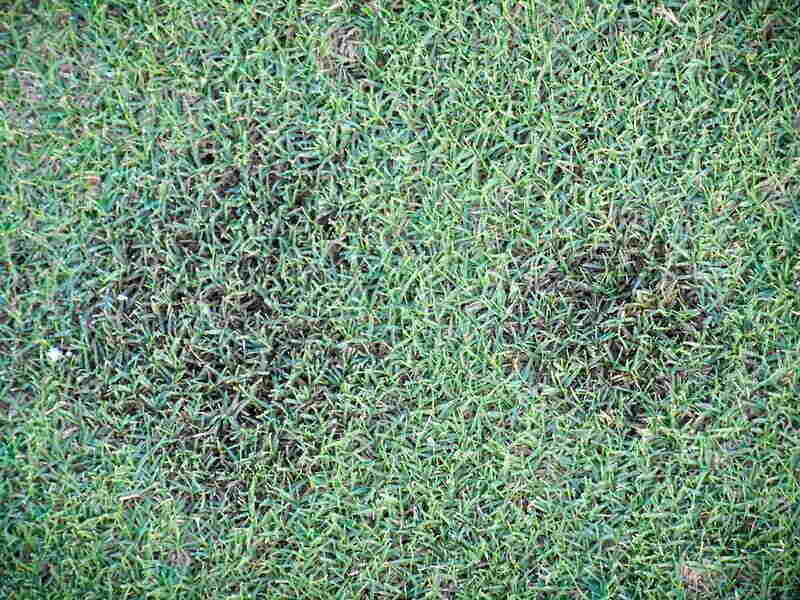How to Identify and Treat 10 Types of Grass Fungus
BY MEL CHILDS | AUGUST 1ST, 2022 | BLOGIs your lawn suffering from dollar spot, snow mold, or brown patch? This guide will help you identify 10 common types of grass fungus quickly, so you can treat and prevent them.
Contents:
- What is Grass Fungus?
- 10 Types of Fungus
Dollar Spot
Gray Leaf Spot
Gray Snow Mold
Pink Snow Mold
Leaf Spot
Necrotic Ring Spot
Powdery Mildew
Red Thread
Brown Patch
Summer Patch - How to Prevent Grass Fungus
- FAQ About Grass Fungus
What is Grass Fungus?
A grass fungus is a microorganism that grows and thrives in the soil. It manifests itself as a fruiting body such as mushrooms or in the form of a disease such as summer patch.
Sometimes the fungus can lie dormant in cooler seasons and start to show itself in hot months, or vice versa. Grass fungus can attack the roots or leaves of your lawn, zapping it of nutrients and often changing its appearance.
10 Types of Fungus (and How to Get Rid of Them)
Several of these fungi can result in a number of lawn diseases. Here are the ten most common types of grass fungus.
1. Dollar Spot
This fungus spreads throughout the yard through infected tools or grass clippings. It may even spread by shoes tracking through the grass. Dollar spot starts in early summer and reaches its peak in late summer. It thrives in temperatures between 60 and 85 degrees Fahrenheit. Bentgrass and Zoysia are grasses that are susceptible to this type of fungus.
Symptoms:
- Brown or straw-colored spots on the grass
- Circles 1 to 3 inches in diameter, the size of a silver dollar
- Yellow-green blotches on leaves
Treatment:
- Dethatch your lawn
- Apply a compost top dressing
- Minimize watering your lawn
- Apply a fungicide that includes benzimidazole and DMI
- Mow regularly and develop a lawn care regimen
2. Gray Leaf Spot
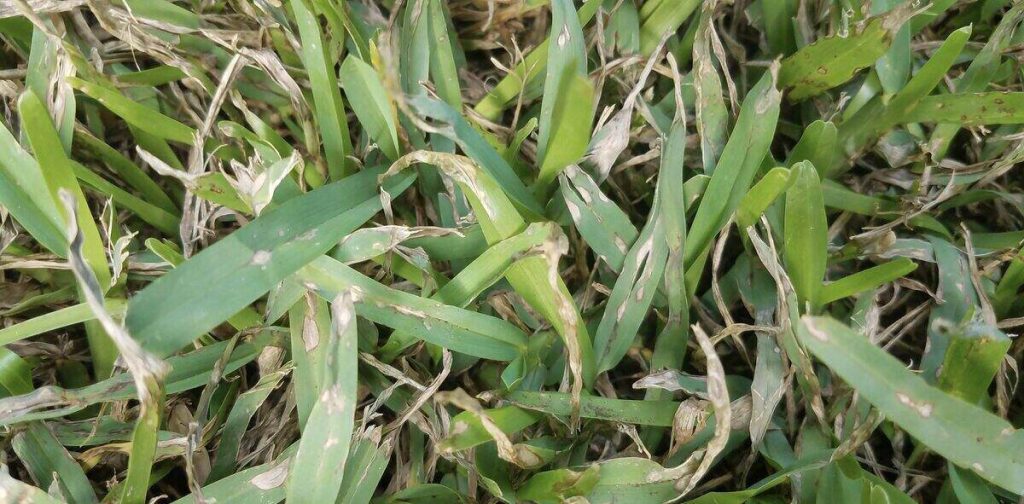
Gray leaf spot creates an enormous amount of spores that invade grass through cut leaf tips. This fungus targets St. Augustinegrass but can also affect Bermudagrass, ryegrass, centipedegrass, and tall fescue.
Symptoms
- Small, tan, oval leaf spots on grass blades will have a dark brown border
- Left untreated, the entire grass blade may turn brown and appear to be suffering from drought
Treatment
- Avoid weed killers or fertilizers containing nitrogen, especially during warm weather. Nitrogen leaves your lawn susceptible to fungal spores
- Water only once a week, in the early morning.
- Expose the area to more light by pruning nearby trees
- Prune trees and undergrowth to improve air movement and light intensity
- Apply fungicides like Scotts EX or Fame Granular Fungicide to cure the problem within about two weeks
3. Gray Snow Mold
Gray snow mold is a fungus that grows in winter under snow in temperatures between 30 and 40 degrees Fahrenheit, spreading its threads into plant tissues. This disease tends to attack bluegrasses, bentgrass, ryegrass, and fescues.
Symptoms:
- Gray or straw-colored grass
- Circular matted areas that look like spider webs
Treatment:
- Dethatch
- Untangle matted areas
- Minimize use of nitrogen fertilizer
- Avoid lush growing in winter
- Cut grass until the lawn goes dormant
4. Pink Snow Mold
Similar to gray snow mold, this fungus attacks the grass leaves, forming a disease that looks like red or coral webs. Unlike gray snow mold, pink snow mold doesn’t require snow to thrive. Annual bluegrasses and bentgrasses are most susceptible to this type of grass fungus.
Symptoms:
- Circular patches 2 to 10 inches in diameter
- Gray, tan, or light pink-colored grass
Treatment:
- Untangle matted grass
- Use moderate amounts of nitrogen fertilizer
- Dethatch grass
- Use penetrant fungicides that control microdochium patch
5. Leaf Spot
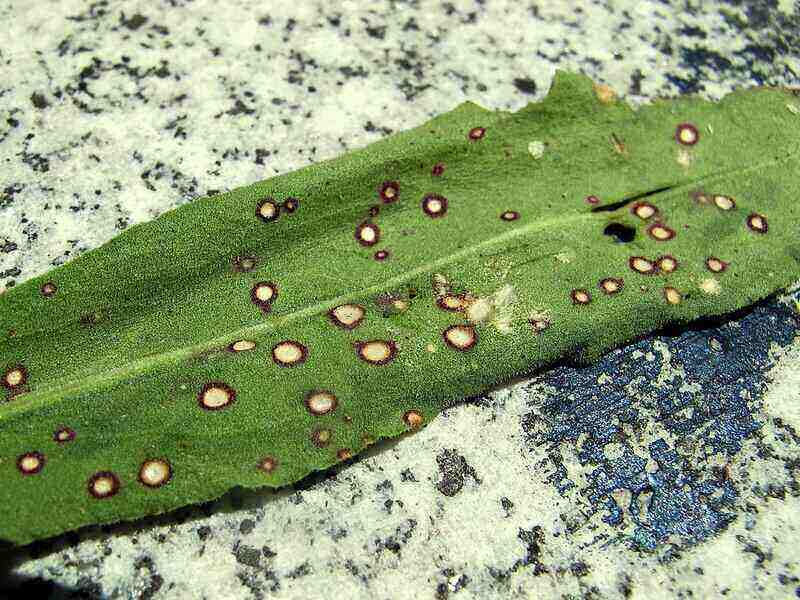
Leaf spot develops in early spring and spreads in spring or late fall, attacking the grass crown and roots. This fungus attacks Kentucky bluegrass, perennial ryegrass, and tall fescue.
Symptoms:
- Small dots or concentrated circles
- Purplish or dark spots
- Grass crown and roots affected
- Quick progression
Treatment:
- Overseed the lawn
- Minimize the use of nitrogen fertilizers
- Water deeply but infrequently
- Use fungicides with iprodione, chlorothalonil, mancozeb, fludioxonil, azoxystrobin, or penthiopyrad when the disease is young
- Cut your grass shorter since the fungus thrives in tall grass
- Minimize thatch
6. Necrotic Ring Spot
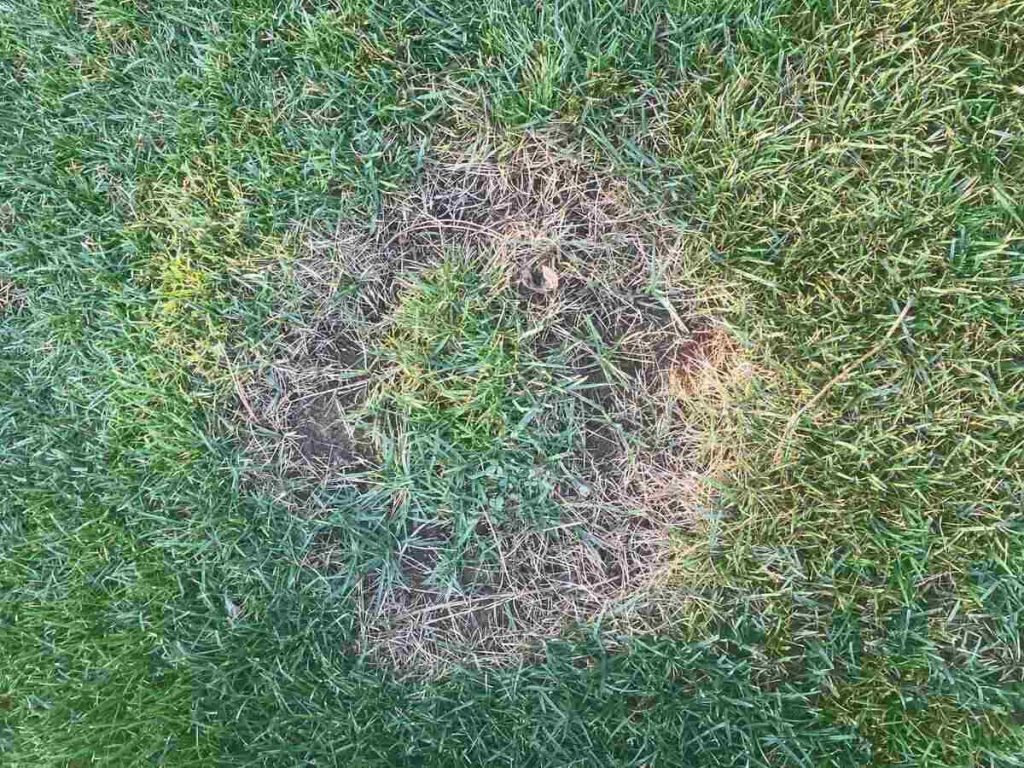
Necrotic ring spot attacks the roots of grass, creating donut-shaped dead spots. It attacks fine fescue, annual bluegrass, Kentucky bluegrass, and rough bluegrass.
Symptoms:
- Circular formations up to 3 feet in diameter
- Grass turns bleach-colored
- Frog-eye appearance
Treatment:
- Use fungicides with myclobutanil, fenarimol, propiconazole, or thiophanate methyl.
- Treat when the fungus is active
- Aerate the soil
- Water lightly
- Avoid cutting more than one-third of the grass blade height when mowing
7. Powdery Mildew
This fungus forms in moist, cool climates when the ground has poor air circulation. It forms on the grass blades, particularly Kentucky bluegrass.
Symptoms:
- Powdery looking substance forms on the blades of grass
- Black fruiting bodies accompany the disease
Treatment:
- Increase sunlight in affected areas
- Transplant plants that interfere with air circulation
- Apply fungicides with myclobutanil, propiconazole, or triadimefon
8. Red Thread
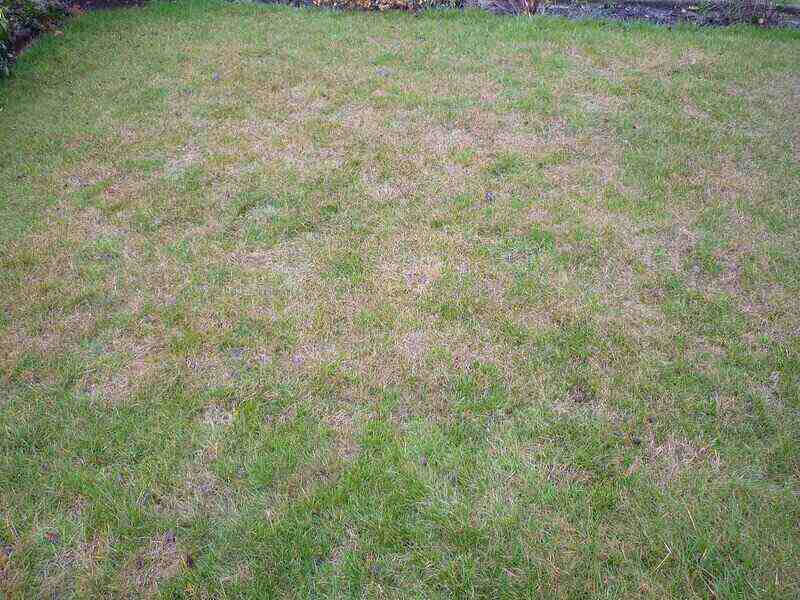
You can identify red thread by the clusters of red or pink threads throughout your fine fescue, perennial ryegrass, bentgrasses, or bluegrasses. The fungus enters the grass through its blades, spreading to other areas, and is common in rainy seasons of spring and early summer.
Symptoms:
- Irregular patches of pink
- Thread-like fungus on the tips of blades
- Rapid progression over the leaf’s surface
- Bleach-colored during later stages
Treatment:
- Apply an adequate amount of nitrogen fertilizer to give the grass a fighting chance against the fungus
- Water deeply, but only three times a week
- Get assistance from lawn care professionals for severe cases
9. Brown Patch
Brown patch attacks the roots and spreads to the leaves and stems of grass. This fungus attacks fescues, bentgrass, ryegrass, and bluegrasses.
Symptoms:
- Light brown patches on the lawn
- Reddish-brown lesions on stems and roots
- Ring-shaped appearance
Treatment:
- Improve your water regimen; switch to morning watering rather than evening
- Remove grass clippings as you mow
- Dethatch
- Avoid nitrogen fertilizers while the disease is active
- Apply a fungicide
10. Summer Patch
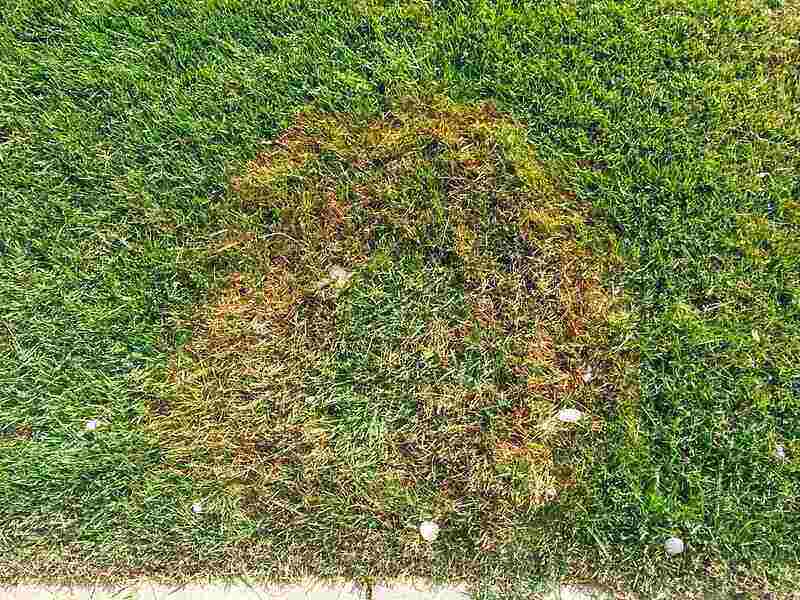
Summer patch is a fungus that usually attacks Kentucky bluegrass, fine fescues, and annual bluegrasses. The fungus attacks the roots of the grass.
Symptoms:
- Orange-brown circular or oval-shaped patches
- White or straw-colored patches over prolonged periods
Treatment:
- Aerate soil when it becomes compacted
- Minimize thatch
- Water longer but less often
How to Prevent Grass Fungus
You can prevent a grass fungus from invading your lawn with a few lawn maintenance tips.
- Cut your grass to a healthy length, between 2.5 to 3 inches tall
- Don’t overwater your lawn
- Improve the drainage of your yard
- Dethatch your lawn
- Keep your lawn tools cleaned and sanitized
- Minimize the use of fertilizer, especially nitrogen fertilizer
- Plant a fungus-resistant grass
- Maintain a proper pH balance in the soil
- Remove old mulch or yard debris in your yard
FAQs About Grass Fungus
1. Will a lawn fungus go away on its own?
No. The fungus will spread and get worse over time.
2. Are certain grass types more susceptible to lawn fungus than others?
Yes. For example, Bermudagrass, bluegrasses, and Zoysiagrasses are vulnerable to various types of fungus. Planting a much more resistant species like creeping red fescue will help keep fungus at bay.
3. Will mowing the infected lawn spread the disease?
Yes. The blades of your mower could spread the fungus throughout your yard. To minimize the spread of the pathogens to other parts of your yard via your lawn mower, clean and disinfect the mower blades before each mow.
Not sure how to treat the grass fungus invading your lawn? We’ll help you find a lawn care professional in your area.
Main Photo Credit: Flickr/ Kris Lourd/CC BY 2.0
